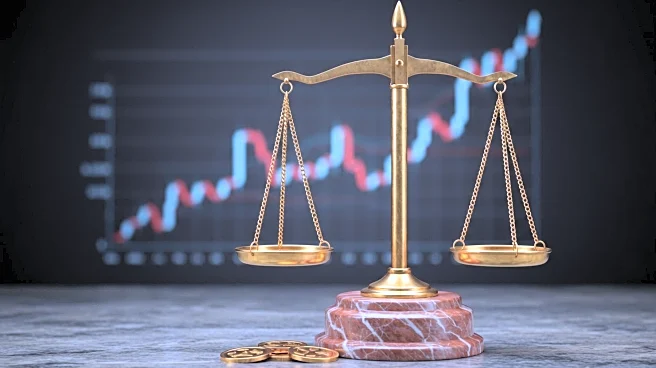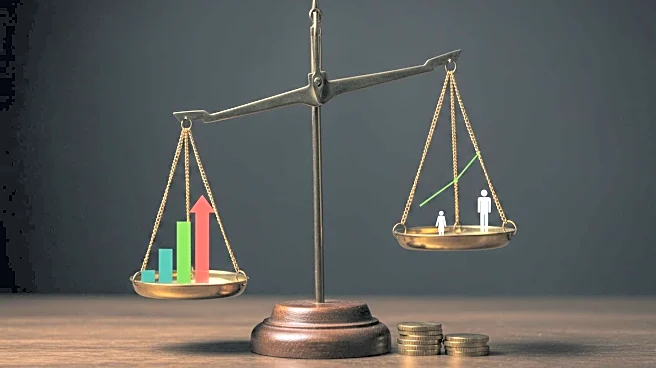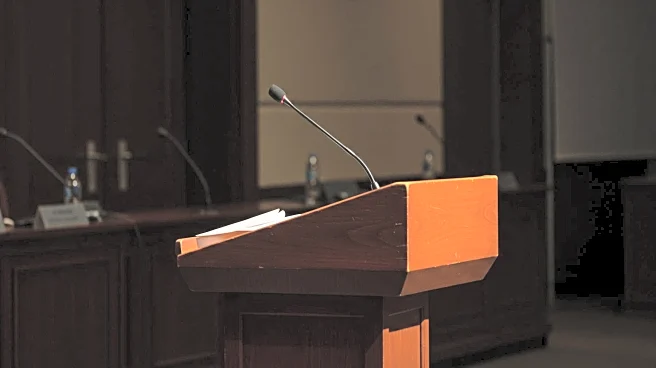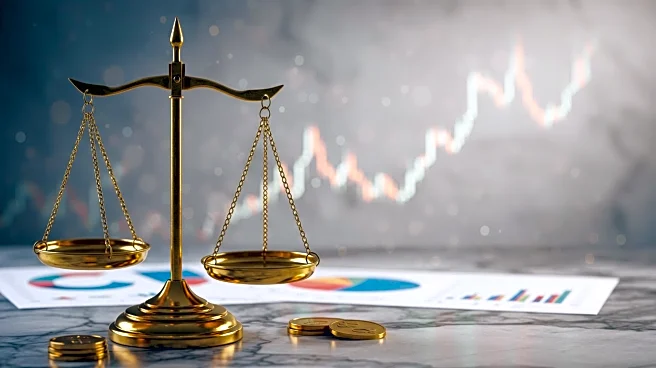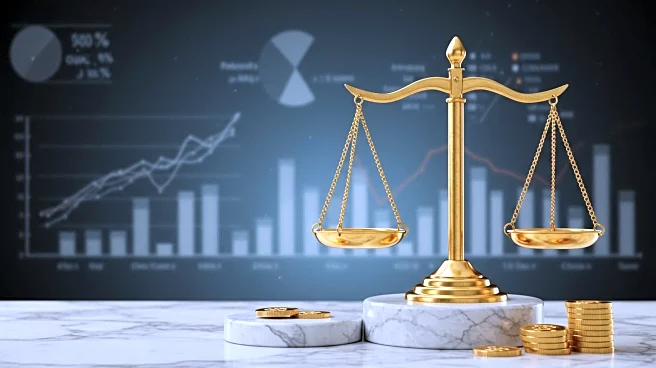What's Happening?
Federal Reserve Chair Jerome Powell has indicated that the central bank may consider cutting interest rates in the near future. Speaking at the Jackson Hole Economic Policy Symposium, Powell highlighted the resilience of the U.S. economy but noted potential risks to employment and inflation. The Fed has maintained its benchmark interest rate in the 4.25%-4.5% range since December, amidst uncertainty over inflationary pressures from tariffs imposed by the Trump administration. Powell emphasized that any policy adjustments would be data-driven, focusing on maximum employment and price stability. Market reactions to Powell's speech were significant, with U.S. stocks surging and Treasury yields falling, as traders now anticipate a possible rate cut at the Fed's September meeting.
Why It's Important?
Powell's remarks are crucial as they suggest a shift in the Fed's monetary policy, which could have widespread implications for the U.S. economy. A rate cut could stimulate economic growth by making borrowing cheaper, potentially benefiting businesses and consumers. However, it also reflects concerns about economic stability, particularly in the labor market. The decision to cut rates could impact inflation, employment, and overall economic growth. Stakeholders such as investors, businesses, and policymakers will closely monitor the Fed's actions, as these decisions could influence financial markets and economic policy.
What's Next?
The Federal Reserve's upcoming meeting in mid-September will be pivotal, as it will include new economic projections and potentially a decision on rate cuts. The Fed will consider incoming economic data, including the August nonfarm payrolls report and consumer price data, to guide its decision. Analysts suggest that unless there is unexpected strength in the labor market, a modest rate cut is likely. The Fed's actions will be closely watched by financial markets and could set the tone for future economic policy.
